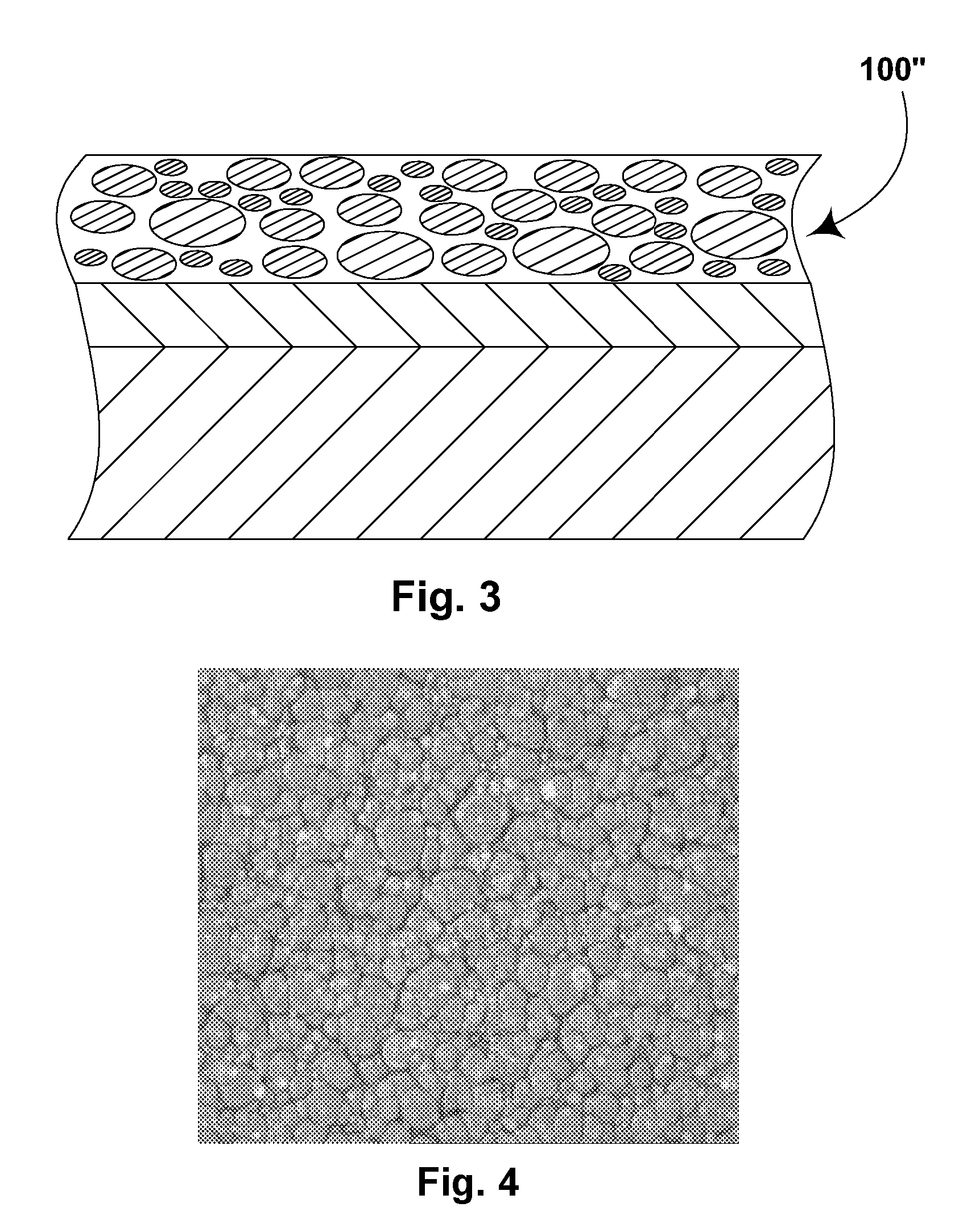Electrophoretic medium and process for the production thereof
a technology of electrophoretic medium and process, applied in the field of electrophoretic medium, can solve the problems of inadequate service life of these displays, preventing their widespread use, and overcoming inadequate lifetimes of displays
- Summary
- Abstract
- Description
- Claims
- Application Information
AI Technical Summary
Benefits of technology
Problems solved by technology
Method used
Image
Examples
example 1
[0080]An internal dual-particle phase (i.e., a phase which will eventually form droplets) was prepared containing 30 percent by weight of polymer-coated white particles (titania) and 5 percent by weight polymer-coated black particles (carbon black) in a suspension medium comprising a mixture of a hydrocarbon (Isopar-G, available commercially from Exxon Corporation, Houston, Tex.; “Isopar” is a Registered Trade Mark) and a halogenated hydrocarbon oil (Halogenated hydrocarbon oil 0.8, available commercially from Halogenated Hydrocarbon Products Corporation, River Edge, N.J.) and containing a dispersant (Solsperse 17000, available commercially from Avecia Ltd., Blackley, Manchester, United Kingdom; “Solsperse” is a Registered Trade Mark). Separately, a 15 percent w / w solution of pigskin gelatin (300 Bloom strength gelatin from Dynagel Inc., Calumet City, Ill. 60409) was prepared. The gelatin solution (200 g) was placed in a reactor equipped with a stirrer, SDS (0.3 g) was added, and th...
example 2
[0083]Example 1 was repeated except that the internal phase contained 17 percent by weight white particles and 1.8 percent by weight black particles, and that only 59.5 g of internal phase was added to 200 g of gelatin solution in order to keep the volume ratio of the two phases the same as in Example 1. Also, a 5 mil (127 μm) gap was used with the draw down bar to produce a dried electrophoretic medium approximately 41 μm thick and having a maximum droplet size of about 35 μm.
[0084]In order to test the switching properties of the medium, the medium was vacuum laminated at 60° C. to a ITO-coated polyester using NeoRez R-9320 urethane binder (available commercially from Zeneca Resins, Wilmington, Del.; NeoRez is a Registered Trade Mark) as the lamination adhesive; the lamination adhesive layer in the final structure was 79 μm thick. A 30 V square wave form (500 msec at 30 V followed by 500 msec at 0 V) was applied to the electrodes. The electrophoretic medium switched in both directi...
example 3
PVD Medium
[0085]An internal phase (electrophoretic particles plus suspending fluid and additives) was formulated using a polymer-coated copper chromite black pigment prepared substantially as described in Example 3 of U.S. Patent Application Publication No. 2005 / 0000813 and a polymer-coated titania white pigment prepared substantially as described in Example 28 of U.S. Pat. No. 6,822,782. The internal phase was prepared by mixing the following components:
[0086]
Copper chromite (60 weight percent dispersion in Isopar G)321.90gTitania (60 weight percent dispersion in Isopar G):804.76gSolsperse 17K (10 weight percent solution in Isopar G)94.64gSpan 853.38gAdditional Isopar G:75.31g
[0087]The resultant mixture was sonicated for 1 hour by immersion in a sonicating water bath, and then rolled overnight on a mechanical roller to produce an internal phase ready for conversion to a polymer-dispersed electrophoretic medium.
[0088]To convert this internal phase to a polymer-dispersed electrophore...
PUM
| Property | Measurement | Unit |
|---|---|---|
| thickness | aaaaa | aaaaa |
| thickness | aaaaa | aaaaa |
| thickness | aaaaa | aaaaa |
Abstract
Description
Claims
Application Information
 Login to View More
Login to View More - R&D
- Intellectual Property
- Life Sciences
- Materials
- Tech Scout
- Unparalleled Data Quality
- Higher Quality Content
- 60% Fewer Hallucinations
Browse by: Latest US Patents, China's latest patents, Technical Efficacy Thesaurus, Application Domain, Technology Topic, Popular Technical Reports.
© 2025 PatSnap. All rights reserved.Legal|Privacy policy|Modern Slavery Act Transparency Statement|Sitemap|About US| Contact US: help@patsnap.com



